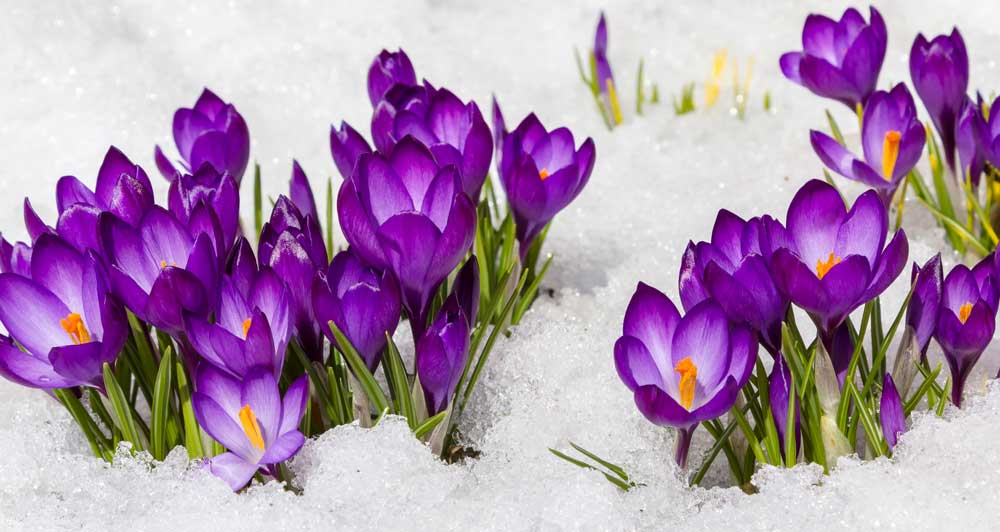Fall-Planted Bulbs Are a Lifeline for Early Bees
As the leaves fall and the garden begins to quiet, it’s tempting to think the growing season is over. But don’t hang up your trowel just yet, let’s first think of next spring and how we can best prepare for it. While we humans cozy up with tea and flannel, our pollinator friends are relying on gardeners to give them a head start come spring. That’s where fall-planted bulbs come in, offering vital early nectar when little else is blooming.
Let’s spotlight a few unsung heroes of the early bloom brigade: Crocus, Hyacinth, and Muscari.

Crocus: The Spring Wake-Up Call
Crocus is often the very first flower to bloom, sometimes even pushing through snow! This early flowering period means crocus fills a vital gap in the pollinator calendar, supplying pollen and nectar when few other plants can.
Crocus creates cheerful little cups of purple, try Flower Record, white, try Giant Joan of Arc, or yellow, try Orange Monarch, and they are more than just eye candy. They actually are critical nectar sources for bees, especially native solitary bees, bumblebees, and queen bumblebees emerging from hibernation. These bees rely heavily on early pollen sources to replenish their energy and support colony growth. The timing of crocus flowering aligns perfectly with the needs of these emerging pollinators.
Crocuses offer both nectar and pollen in a compact, bee-friendly package. Bonus: they naturalize beautifully, so you’ll get more blooms (and more bee snacks) each year.
Hyacinth: Fragrant and Functional
You might know hyacinths for their intoxicating scent and tightly packed flower spikes, but bees adore them, too. Their early-spring bloom time, rich nectar supply, and tiny trumpet-shaped blooms make them a magnet for honeybees, mason bees, and other early foragers. Hyacinths are also super easy to grow. Just plant the bulbs in fall, six to eight inches deep in well-drained soil, and forget about them until spring magic happens.
Hyacinths provide the best show when planted en masse. Swaths of confection-colored stalks covered in blooms is a sight to behold. Imagine cotton-candy inspired Apricot Passion, or Delft-blue Sky Jacket emerging in early spring when color is scarce. For a more moody landscape, Dark Dimension brings emotion and a deeper beauty.
Side note: You may need to wear gloves when handling hyacinth bulbs as some gardeners have experienced allergic reactions.
Muscari: The Bee Buffet in Miniature
Also known as grape hyacinth, muscari produces tiny, bell-shaped flowers in vivid blues and purples. These low-growing beauties bloom slightly after crocus but before most tulips, making it a perfect bridge plant in a pollinator-friendly spring garden.
Despite their small size, muscari flowers pack a powerful nectar punch. Plant them in clusters for the best visual and bee-friendly impact—they look great under trees or along paths. Take a look at Armeniacum or Latifolium for that iconic blue color, but we also carry muscari and tulip mixes to give you blooms throughout early spring.
By planting these bulbs in the fall, you’re not just planning for a prettier garden, you’re giving pollinators a reason to celebrate when winter thaws. Early spring can be a hungry, challenging time for bees, and your garden can offer a life-saving buffet. So dig in now, and thank yourself later!